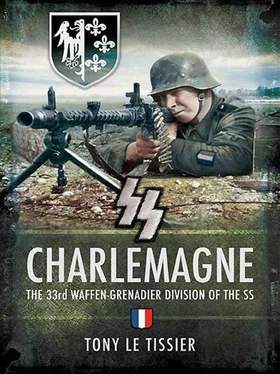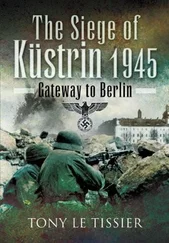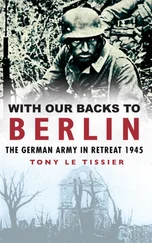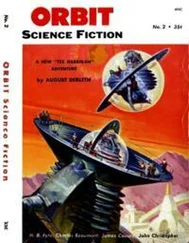The proper execution of such an operation depended upon the cover of night, and it was decided to start evacuating Körlin at 2300 hours. Nevertheless, the Charlemagne ‘s resistance on 4 March had enabled some elements of the 3rd Panzer Army to withdraw. A delayed order to regroup near Plathe eventually reached the Division, but it was doubtful whether it was possible to do so. The order of march was determined as follows:
– Vanguard: Divisional HQ with Lieutenant Fenet’s 1st March Battalion.
– Main Body: Captain de Bourmont’s Reserve Regiment with the Monneuse and Defever Battalions.
– Rearguard: Captain Bassompierre’s 2nd March Battalion.
At the conclusion of the meeting, SS-General Krukenberg, SS-Colonel Zimmermann, and SS-Captain Jauss joined Lieutenant Fenet’s battalion, which left its positions in Redlin at the designated time. Brigadier Puaud declined to join the vanguard, wanting to remain until the departure of the rearguard.
Then, at about 0100 hours next day, Brigadier Puaud changed his mind and decided to leave Körlin with Major de Vaugelas and Captain Renault to rejoin the vanguard, wrongly believing that this would be the most dangerous position. However, their vehicle broke down on the Belgard road and they were then obliged to march along with Captain de Bourmont’s main body.
The vanguard column arrived at Belgard at about 0200 hours, crossed the cemetery and circuited the burning town, the roads of which were choked with abandoned vehicles and where a furious battle was in progress between the Soviets and some Wehrmacht units. The Fenet Battalion then disappeared into the countryside.
The 3,000 or so men comprising the main body of the Charlemagne were now under the direct command of Brigadier Puaud, assisted by Major de Vaugelas, Captains de Perricot, de Bourmont, Schlisler, Renault and other officers. The head of this column arrived at Belgard in its turn, but because of the extent of the fighting going on in the town, made a half-turn and crossed the Persante downstream from the town.
At daybreak the column found itself in a wooded area south of Belgard where it had regrouped several days previously, and came under artillery fire. The troops dispersed and used the cover of dense fog to mask them from the enemy.
According to an eyewitness, Medical Lieutenant Dr Métais, with first light a thick wood, marsh, a stream and then a wide plain could be discerned. The edge of the woods was on either side 100m away. Brigadier Puaud was there on foot with his staff: ‘What’s happening. Its mad! Who’s leading?’
‘De Bourmont’.
Then turning towards Major de Vaugelas, the chief-of-staff, Brigadier Puaud said: ‘Take a horse. Tell him to find a wood free of the enemy straight away, to stay there and to organise the defence!’
As Major de Vaugelas left for the head of the column at the gallop, Brigadier Puaud shouted: ‘It’s mad! I already advised him to hide in woods during daylight. If this goes on, there will be a massacre!’
Soon afterwards, at about 0800 hours, the thick fog lifted within a few minutes just as the column headed for the surrounding woods. Immediately spotted by the Russians, it was taken under a violent fire from tanks that had taken up the chase with the support of heavy weapons. The panic and massacre foreseen by Brigadier Puaud then followed. The survivors tended to make their way to the nearby woods. Several succeeded, but the majority were shot down or captured.
The rearguard formed by the Reserve Regiment, some eighty to ninety men under Lieutenant Bartolomei, arrived at Belgard at about 0700 hours. Fighting was still in progress, and Lieutenant Bartolomei considered reinforcing or relieving those elements of the Charlemagne that he thought were trapped there. He then came under heavy mortar fire and became disorientated, heading back to Körlin, which he had left several hours earlier and where Captain Bassompierre’s 2nd March Battalion was now encircled. There too his company came under violent fire, for the Russians had completely invested Körlin. The detachment then withdrew along the Persante and crossed it by a footbridge. They were returning to Körlin along the left bank when, at about noon, they came across 3 officers and 150 men that had been scattered in that morning’s disaster. Together they then decided to head for the Stettin area by night marches, but all were to be captured several days later.
At about 1400 hours, several hours after the disaster in the Belgard woods, Brigadier Puaud was seen by some soldiers wounded on a horse. He told them to try and get through to the west. Brigadier Puaud was never seen again. It would seem that, wounded by a shot in the leg, he had succeeded with the help of a group of comrades in reaching Greifenberg, where he was left in an inn with other wounded that could not be moved. He disappeared there, probably eliminated by enemy soldiers.
At about 0500 hours on the 5th, another group of about 600 men led by Second-Lieutenant Leune and Medical Lieutenants Métais and Herpe, formed up and marched westwards by night for two days, managing to rejoin the Fenet Battalion at Schloss Meseritz on the morning of 7 March.
Another detachment under Lieutenant Fayard joined up with a company of Volkssturm and was captured by Russian tanks on the 7th. Several other small groups tried to regain the German lines in vain.
On the morning of the 5th, a group of about 150 isolated Frenchmen and Germans collected around three self-propelled guns at Fritzow and tried to get through to Kolberg. Caught halfway in a little village by Russian tanks, they succeeded in getting away and penetrating the enemy investment of the outskirts of Kolberg. There they were directed to the Casino, where they met up with Captain Havette and about 100 sick and wounded men from the Charlemagne .
The situation in Kolberg was dire. Colonel Fritz Fullriede, a former farmer in South-West Africa, had arrived on 1 March to take over command of the town, which Hitler had declared a fortress to be defended to the last man. Fullriede found a garrison of 3,300 combatants, including a fortress-engineer machine-gun battalion, a training battalion and a Volkssturm battalion, a flak battalion and a train carrying six immobile tanks awaiting repair. But the peacetime population of the town had expanded from 35,000 inhabitants to 85,000. Outside the town were parked twenty-two trains that had brought refugees from all over the province, some hoping to be conveyed on to Stettin and some hoping to be taken on by ship. However, the railway authorities in Stettin had blocked further traffic into the city as it was already crammed with refugees.
When Colonel Fullriede requested the local Nazi leader to organise the evacuation of civilians from the town, he was told that the provincial Gauleiter had not given his permission, nor would he, as the orders were for the town to be held. However, Colonel Fullriede could not see how he could defend a town clogged with refugees, and decided to go ahead with their evacuation regardless and instructed SS-Brigadier Bertlin of the local Party administration to organise it.
On 5 March the first Soviet artillery shells hit the town. A combat team ordered to clear the railway line out of the town to the west next day was stalled by Soviet tanks. However, the coastal road was still open and thousands of refugees set off on foot. It is estimated that some 15,000 refugees eventually managed to get through to Swinemünde this way. For the more fortunate ones, the Luftwaffe instituted a shuttle service with flying-boats operating between the Kamper See lake near the seaside resort of Deep and their base at Parow, 7km west of Stralsund, taking thirty to thirty-five passengers at a time.
Читать дальше












